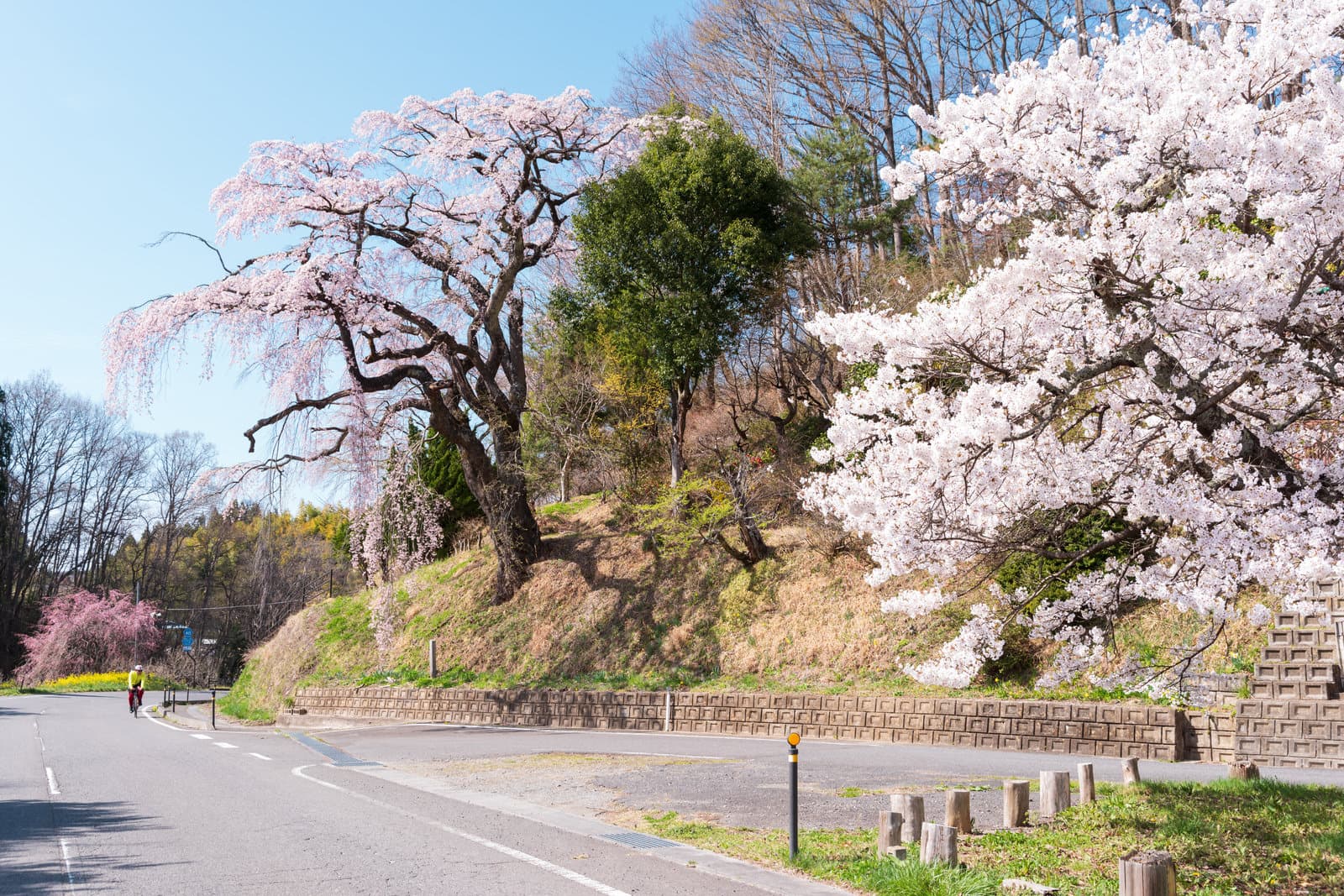Introduction: When Cherry Blossoms Announce the Spring
When spring arrives in Japan, the air softens, and news reports begin to trace the progress of the sakura front (桜前線)—the northward path of cherry blossoms blooming across the country.
As the pink tide of petals spreads from Kyushu to Hokkaido, people feel their hearts bloom, too. Streets, schools, temples, and riversides turn a delicate shade of pink, and smiles appear everywhere.
This is the season of Hanami (花見)—literally “flower viewing.”
But Hanami is more than simply looking at flowers. It is a cultural ritual of gathering under the blossoms, sharing food, laughter, and gratitude for the beauty of life.
In Japan, to see the cherry blossoms is to pause and remember that life, like spring, is precious precisely because it doesn’t last forever.
From Sacred Offerings to a Festival for Everyone
The custom of Hanami has roots reaching back over a thousand years.
In ancient Japan, people believed that spirits of the rice fields dwelled in the trees. Farmers offered food and sake beneath blooming branches to pray for a good harvest.
During the Nara period (8th century), the nobility admired plum blossoms, a Chinese import associated with scholarship and refinement. But by the Heian period (9th–12th centuries), the native cherry blossom had captured the hearts of poets and courtiers.
Aristocrats gathered in gardens to compose poems beneath the trees, as seen in The Tale of Genji and The Kokin Wakashū, where cherry blossoms appear as symbols of elegance and impermanence.
In the late 16th century, samurai warlord Toyotomi Hideyoshi famously hosted grand cherry blossom parties at Yoshino and Daigo Temple, turning the event into both political display and artful celebration.
By the Edo period, Hanami became a festival for the people.
Shōgun Tokugawa Yoshimune planted cherry trees throughout Edo (modern Tokyo) so that commoners could enjoy the blossoms, too.
Thus, Hanami transformed from a sacred offering to a joyful public celebration—a symbol of equality beneath the same sky of petals.
What Cherry Blossoms Represent: Beauty, Ephemerality, and Renewal
Why do cherry blossoms move the Japanese heart so deeply?
Perhaps because they bloom in perfection, then fall at their most beautiful moment.
The brief life of sakura mirrors the impermanence of all things. In their petals, Japanese people have long seen the truth of mono no aware (もののあはれ)—the gentle sadness that comes from recognizing that everything is transient.
For the samurai, the cherry blossom embodied the ideal of living with dignity and dying without regret. To fall gracefully, like a petal, was to live beautifully.
And yet, the falling of flowers is not an end but a renewal. Their return each spring reminds us that life continues, that endings make way for beginnings.
In this way, cherry blossoms teach both humility and hope—beauty not despite their brevity, but because of it.
Modern Hanami: Joy, Etiquette, and Change
Today, Hanami is one of Japan’s most beloved seasonal events.
Families picnic under blooming trees, coworkers gather after work for lively nighttime parties, and friends share homemade bentos and laughter.
Yet Hanami is not just a party. It’s also a social mirror reflecting how people relate to nature and to one another.
The blue picnic sheets spread across parks, the early morning race to reserve the best spot, and the calls to clean up after the festivities all reveal both the joy and the challenges of celebrating together.
Nighttime yozakura (夜桜) illuminations and food stalls have made Hanami a major attraction, blending tradition with modern fun.
After the COVID-19 pandemic, new forms appeared—smaller gatherings, virtual Hanami events, and quiet walks among the blossoms.
Even when circumstances change, the desire to meet under the cherry trees remains unchanged.
Words of Spring: Sakura in the Japanese Language
Cherry blossoms are not only seen—they are spoken.
Japanese is full of expressions born from this single flower.
The saying “Hana yori dango (花より団子)”—literally “dumplings over flowers”—reflects the down-to-earth humor of people who value food as much as beauty.
The phrase “Sakura wa chitte mo kokoro ni saku” (“Even when cherry blossoms fall, they bloom in our hearts”) expresses gratitude that endures beyond loss.
In daily conversation and literature alike, sakura terms like mankai (満開, full bloom), hanabira (花びら, petals), hanafubuki (花吹雪, a blizzard of petals), and hazakura (葉桜, leaves emerging after the bloom) capture subtle shades of emotion.
As a Japanese teacher, I often tell my students that these words show how the language reflects sensitivity.
They don’t just describe flowers—they describe the heart’s response to beauty.
Blossoms Across the World: Hanami Beyond Japan
Today, the cherry blossom has become Japan’s most beloved global ambassador.
In 1912, Japan gifted over 3,000 trees to Washington, D.C. as a symbol of friendship. Each spring, millions visit the Tidal Basin to admire their bloom at the National Cherry Blossom Festival.
Similar festivals are held in Vancouver, Paris, Bonn, and many other cities.
In Japanese language schools and cultural centers around the world, students make paper blossoms, compose haiku, and learn the word sakura with joy.
Through these celebrations, the cherry blossom continues to connect people across borders—reminding us that appreciation for fleeting beauty is universal.
Beneath the Blossoms: A Moment to Feel Alive
Hanami is not simply about flowers. It is about people.
It is a shared ritual that connects humans with nature and with each other.
Under the blossoms, generations meet—children chasing petals, elders reminiscing, friends sharing food and laughter.
The sight of falling petals reminds us that life is brief, yet wonderfully alive.
Each spring, as the trees bloom again, we are reminded to pause and be thankful for the miracle of renewal.
Cherry blossoms may be silent, but they speak to the heart:
Live fully, love deeply, and let go gracefully.
So as you imagine yourself under a canopy of pink petals—who would you share that moment with?
Because sometimes, the most beautiful season is not what you see, but who you see it with.
